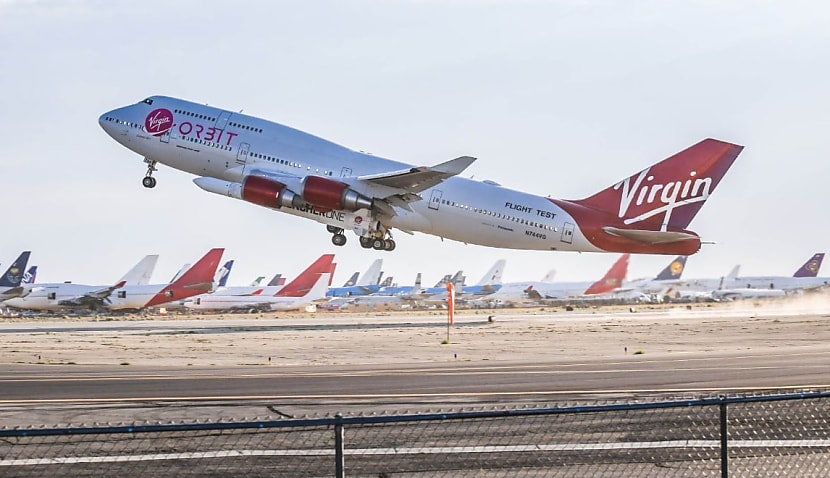
Reports now suggest up to 30 bidders have emerged to save the company from potential insolvency, paving the way for a future blast-off from Toowoomba in Queensland.
It follows its landmark launch in Cornwall, south-west England, failing in January, with all nine payloads on board being destroyed. Virgin Orbit uniquely launches rockets “horizontally” under the wing of a repurposed 747 rather than vertically from a launchpad.
It’s now emerged that the deadline for final bids on the aerospace firm has been pushed out by four days, from 15 May to 19 May, with the deadline for notifying valid bidders pushed out from 17 to 21 May.
Should there be more than one bidder for the business, the auction will take place on 22 May, as opposed to the 18th.
In a statement last week, Dan Hart, chief executive of Virgin Orbit, said multiple parties were interested in buying the company as an “integrated enterprise”, retaining employees and keeping it operational.
“I’m pleased with the number and quality of the indications of interest we’ve received, which we believe reflects the innovative ideas and hard work the team has put into the development of this unique system,” he said.
“I look forward to continuing to work with those who have expressed interest and other parties as we approach the final bid deadline.”
Virgin Orbit filed for bankruptcy protection last month, days after it announced it would cease operations and make around 90 per cent of its workforce redundant.
At the time, Hart said in a statement he believed the “cutting-edge technology” created by the business would have “wide appeal to buyers”.
“While we have taken great efforts to address our financial position and secure additional financing, we ultimately must do what is best for the business,” he said.
The company has kept a skeleton crew of 100 people working on the next launch of its LauncherOne system, scheduled for later this year.
The launch in Cornwall was meant to act as a global showcase for its technology but failed when a fuel filter became dislodged mid-launch.
The blast-off was the first outside the company’s home airport in the Mojave Desert, California, and received significant backing from the British government.
It resulted in the loss of all the payloads that were bound for orbit, including a UK Ministry of Defence satellite and a US Naval Research Laboratory payload.
The UK government announced in mid-January that the UK’s Space Accident Investigation Authority and the FAA would jointly lead an investigation into the crash.
The 747 rocket launch idea works because the Boeing aircraft has a little-known capacity to attach a fifth engine, enabling it to carry a rocket.
After the satellites are fitted underneath the rocket’s nose — or fairing — the projectile is attached underneath the left wing of the jumbo jet.
The aircraft takes off and cruises upwards to its launch position at around 35,000 feet.
“The pilot then pulls up on the 747 to a 30-degree angle because we want the rocket facing the right direction, and we want a bit of upward pitch,” Hart told Space Connect’s sister brand, Australian Aviation, in an exclusive interview last year.
“The other pilot, at the right moment, pushes a button on the panel of the cockpit to release the rocket, which drops — or glides ù for about four or five seconds until it’s safely able to start its engines.”
Seconds afterwards, the 747 banks right to stay clear of the rocket’s path.
In September last year, the business announced plans to launch from Toowoomba Airport in 2024.
Receive the latest developments and updates on Australia’s space industry direct to your inbox. Subscribe today to Space Connect here.









